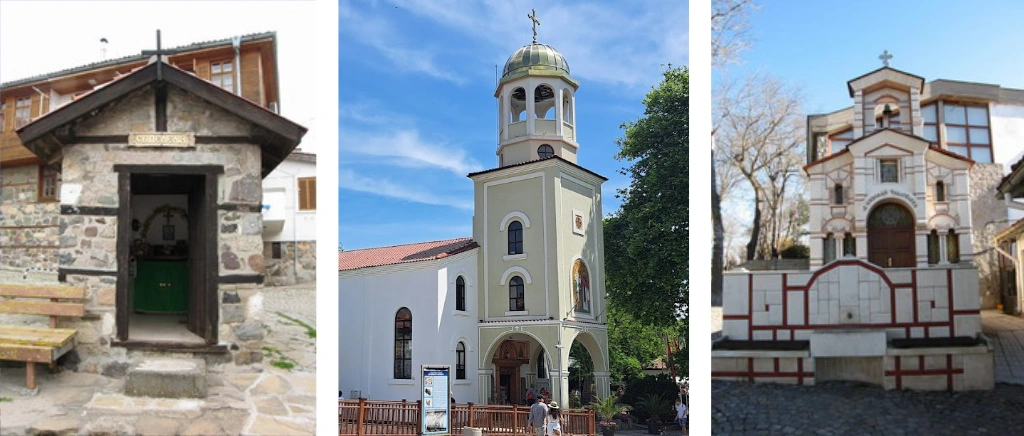
Churches and monasteries
During the Middle Ages, there were over 28 churches and monasteries dedicated to various saints in Sozopol. Interestingly, all of them were destroyed after the city fell under Turkish rule (15th-18th century). In their place, the people of Sozopol later built small chapels, some of which have survived to this day. One of the most famous is the chapel built in honor of Saint Marina. The saint has been declared the patron saint of the city, and her feast day is celebrated every year on July 18th.
The oldest church that is still active today is “St. George,” built in 1828 on the remains of an early Christian basilica from 330 AD. It is the largest church in the city and represents a three-naved pseudobasilica with a single apse. Inside the church, there is a special wood-carved reliquary containing fragments of the Holy Cross, a particle of the relics of St. Andrew the Apostle, the relics of St. John the Baptist, and a vial of myrrh from the relics of St. Nicholas of Myra, depicted on it.
Another active church today is located in the city garden, called “St. Zosim,” built on the site of a medieval temple in 1857. It is a single-nave, single-apse stone church. It is dedicated to another significant saint who is the patron saint of the city. St. Zosim was a Roman legionnaire who was killed for being a Christian. The church houses icons created by the renowned Renaissance artist Dimitar Sozopolski.
Also interesting is the church “Sts. Cyril and Methodius,” built in 1899 by the renowned master Usta Gencho. It is a single-nave, single-apse church. After restoration, the church is open to visitors, and the relics of St. John the Baptist will be relocated there for safekeeping.
On Anaximander Street, almost unnoticed, remains the partially buried church of “St. Bogoroditsa” (Holy Mother of God). The temple is a three-naved, single-apse church.
In the early 5th century BC, a temple dedicated to Apollo the Healer was built on St. Ivan Island. It was here that the renowned statue of Apollo, standing at a height of 13.20 meters, was located. The statue was made of bronze by the great Greek sculptor Callimachus. In 330 AD, the temple was destroyed, and a Christian church named “St. Bogoroditsa Kaleyos” (The Good) was erected in its place. Around the church, a monastery was built in the 5th-6th century. Later, in 1268, a new church was constructed called “St. Ivan Predtecha” (St. John the Baptist). Both churches were part of a vast monastery complex built in the 11th century. Unfortunately, the same complex was destroyed by the Ottoman Turks in 1629.
After archaeological research on the island, the main entrance to the monastery, the library, the royal residence, part of the fortress wall, and monk cells have been discovered. The complex itself occupied an area of over 5 hectares. In its southern part, there were a bakery, a pantry (the monastery kitchen), and refectories, while in the western part, there were the monk cells.
In the latest archaeological research of the monastery complex on the island, the relics of St. John the Baptist have been discovered. According to a survey conducted by Radio “Focus,” this discovery has been determined as the most significant event of 2010.


